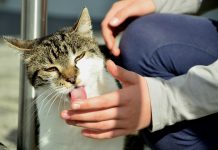Gastric dilatation-volvulus (GDV) or canine bloat or gastric torsion is a severe life-threatening illness in canines. Gastric dilatation-volvulus is the situation the place the abdomen rotates on itself inflicting a twisting of the esophagus the place it enters the abdomen and the pylorus the place the abdomen usually empties into the intestines, thus lowering the power for issues to get in or out of the abdomen. As soon as twisted, the abdomen begins to distend with fuel turning into a big balloon inside the stomach, resulting in impairment of blood circulation within the physique and to the abdomen wall dying due to overdistention. Left untreated, nearly all canines with GDV will die.
Canine Bloat Impacts Primarily Massive Breed Canines With Deep Chests.
READ ALSO
Why My Dog Has Diarrhea?Dog Diarrhea Causes And TreatmentWhy My Dog Licks Me What You Need To Know About Canine DeafnessWhat Is A Dog Training Collar?
The Traditional Indicators Of Bloat
embody nonproductive retching, hypersalivation, restlessness, and a progressively distending and tight stomach. Prognosis of GDV is made with radiographs. Radiographs taken with the canine laying on the best facet present a basic “reverse-C” or “double bubble” signal which is the malpositioned pyloric area of the abdomen sitting above the fundic area of the abdomen.
Preliminary Therapy For Canines With GDV
includes fluid resuscitation to enhance blood circulation to the center, and a few type of decompression of the abdomen, both by an orogastric tube or by trocharization of the abdomen. An orogastric tube is passing a tube from the mouth into the abdomen. This may be troublesome in an awake canine and with the abdomen severely dilated. Trocharization includes passing a big sterile needle or catheter via the stomach wall into the abdomen to alleviate the fuel inside the abdomen. Each of those are short-term methods of relieving the strain build-up inside the abdomen to make the canine extra secure.
Surgical procedure is at all times advisable for canines
with gastric torsion. Surgical procedure is critical to reposition the abdomen and to pexy or completely connect the abdomen to the stomach wall in order that it can not twist once more. If a pexy is just not carried out, the prospect that the canine will bloat once more is as excessive as 80%. After pexying the abdomen to the stomach wall, the possibilities of bloating once more are lower than 10%.
In some circumstances, the abdomen wall exhibits areas of necrosis or dying. If areas of the abdomen wall will not be viable, then these parts must be eliminated. When a gastric resection must be carried out, the mortality fee related to surgical procedure will increase to round 60%.
Publish-op canines must be monitored
intently for arrhythmias which might happen inside the first 24 hours after surgical procedure. With gastric resection, different situations like disseminated intravascular coagulation (DIC) are frequent and probably life-threatening. A majority of canines get well with no issues and as soon as they’re consuming, can go dwelling, often inside 48 hours of surgical procedure. Homeowners are instructed to feed smaller, a number of feedings somewhat than one giant meal. Train is restricted for 2 weeks whereas the stomach incision heals then the canine can return to regular exercise.
Prophylactic Gastropexies Are Generally Beneficial For Excessive Threat Breeds.
These are typically carried out throughout spaying or neutering as puppies and could be carried out utilizing a laparoscope to help the process so the incisions within the stomach are stored to a minimal. Or if surgical procedure into the stomach is required for one more motive reminiscent of to take away an intestinal international physique, a prophylactic gastropexy could be carried out throughout the identical surgical procedure.





















